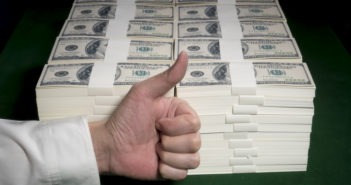US core consumer prices are accelerating once again. They have edged up from 2% YoY in March, the last month of the first quarter to 2.1% in April, the first month of the second quarter.
And that is what Fed Chair Fedwanted to see.
On May 1st, Powell insisted that low inflation in the first quarter is transitory and stressed there is no need to raise interest rates. The upbeat jobs data which also consisted of solid wage growth has been now followed by proof that prices are on the rise at the wake of the second quarter. This data point is critical and overshadows the rest.
Headline inflation, which includes food and fuel, fell short of projections by rising to only 2% against 2.1% that was forecast. Monthly figures also suffered from misses worth 0.1%. However, the core annual number matters more than these figures.
Even if the data has not been impressive, it is more than good enough for the Fed to refrain from rate cuts. At 2.1% Core CPI, there is no imminent risk of deflation and no sense of urgency.
On this background, the greenback has room to rise. The knee-jerk reaction of markets was to sell the dollar, and this move may have been mistaken. As the dust settles, the USD may reassert itself and gain ground.
The argument for a stronger dollar is further enhanced by looking at its peers. Other countries suffer from a slowdown in inflation which is yet to turnaround. To top it off, the recent flare-up of the trade war between the US and China can further boost the greenback, against most currencies, except the safe-haven yen.
So even if one can find soft spots in the US economic picture and point to the instant retreat of the dollar, the greenback remains first, or “the cleanest shirt in the dirty pile.”
Get the 5 most predictable currency pairs
Is it time to buy the dollar? The post-inflation fall does not seem warranted
